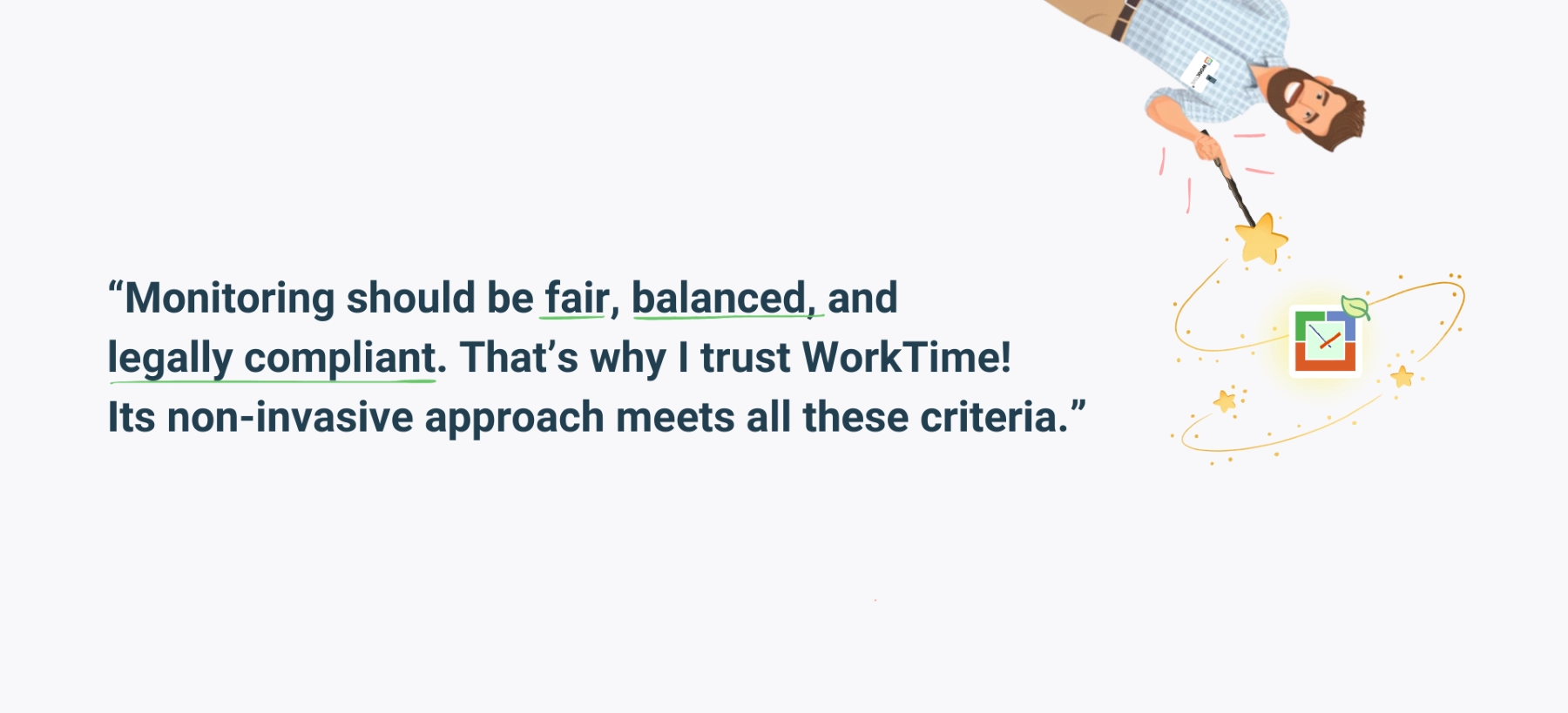This article has been prepared by WorkTime, a trusted non-invasive employee monitoring and productivity tracking solution.In the previous article, we explored US employee monitoring policies. Now, it’s time to turn our focus to the UK. How do the legal requirements differ from the US? We will discuss key factors and steps for crafting a compliant and effective UK employee monitoring policy.
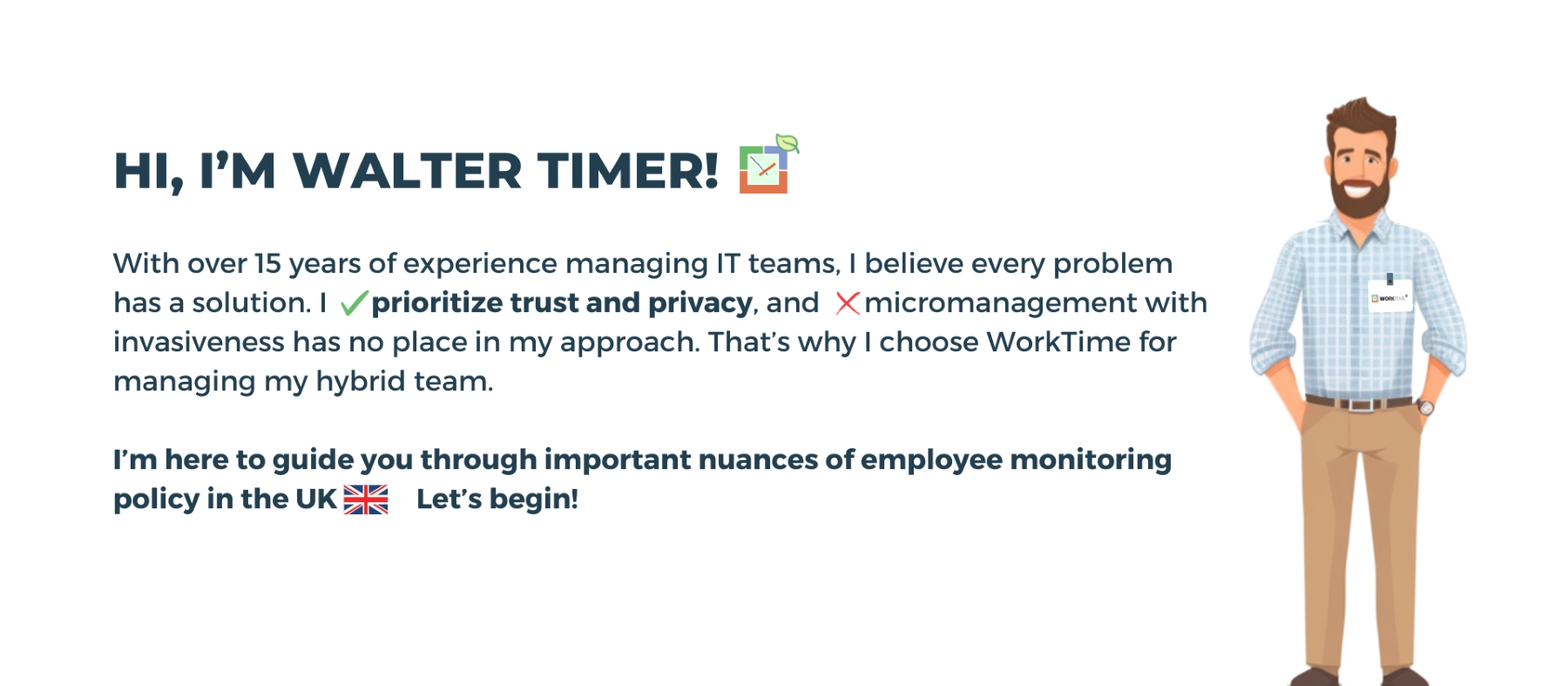
Monitoring UK employees: legal summary
It’s important to consider the following UK laws that apply to monitoring employees before crafting policies.UK GDPR & Data Protection Act 2018
After Brexit, the UK adopted its own version of the GDPR, known as the UK GDPR. According to this Act,- Employers must have legitimate reasons for employee monitoring.
- Employees must be informed about UK employee computer monitoring practices.
- Employers must guarantee the security of personal data collected through monitoring.
Investigatory Powers Act 2016
This Act primarily regulates how businesses monitor employee communication. According to this law, employees have no legal rights to read private emails and messages or intercept phone calls without employee consent or a legal obligation. It also reinforces the UK GDPR, meaning that- Any workplace surveillance must be business-oriented;
- Monitoring UK employees should be transparent;
- Employees should be informed in advance;
- Monitoring UK employees covertly is prohibited, except for exceptional cases (e.g., criminal investigations).
ICO Guidance
Employers should also follow the ICO’s guidance when creating a computer monitoring policy. UK employee computer monitoring must be lawful, transparent, proportional, and fair. Thus, when you are introducing monitoring, make sure that- Employees are informed about monitoring;
- Monitoring UK employees does not involve excessive or overly intrusive features;
- A privacy impact assessment (PIA) is conducted.
Human Rights Act 1998
This Act prohibits invasion of privacy at work. UK employers should balance business interests with employee privacy when introducing employee monitoring software.Regulations of Investigatory Powers Act 2000 (RIPA)
Which laws govern employees’ rights? RIPA requires proper justification for the interception of communications. If the monitoring tools do not comply with this regulation, it leads to legal penalties and claims for invasion of privacy at work. UK employers could face serious legal and financial penalties for not complying with this Act.Is employee monitoring policy required in the UK?
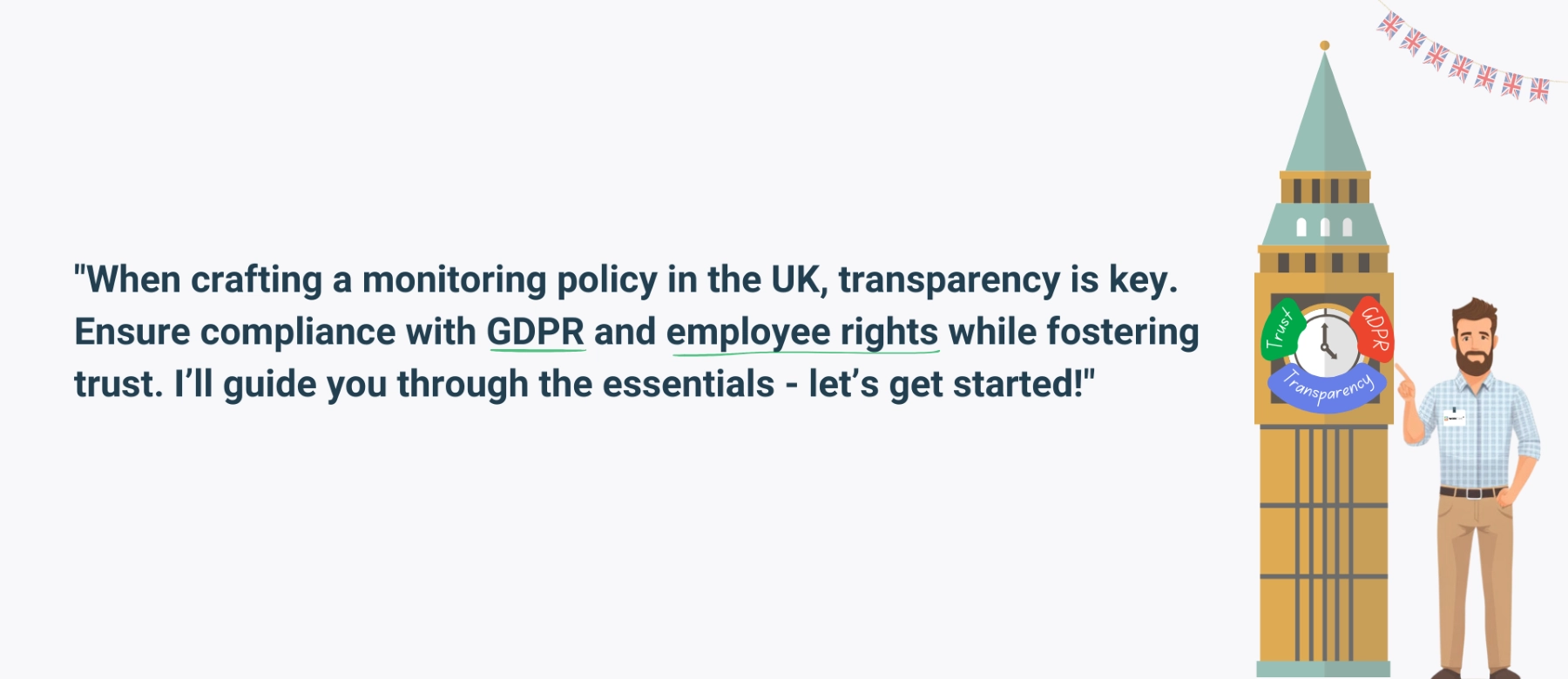
Remote monitoring policy nuances
Remote workplace surveillance policy is crucial for legal protection, transparency, and employee trust. What are the best practices for monitoring employees working from home in the UK?- Clearly outline what is monitored to ensure employee awareness;
- Justify monitoring based on legal compliance;
- Maintain an ethical approach to monitoring. Working from home laws (UK) require business-oriented but not excessive monitoring.
When and how to introduce monitoring policy to employees?
It depends on the situation. There are several options possible:- Before actually introducing employee monitoring software. Announce monitoring and introduce policy before it begins;
- During the onboarding process. You can add the UK employee monitoring policy to the contract or provide a monitoring handbook;
- When updating policies. Any changes to monitoring employees at work should be communicated in advance.
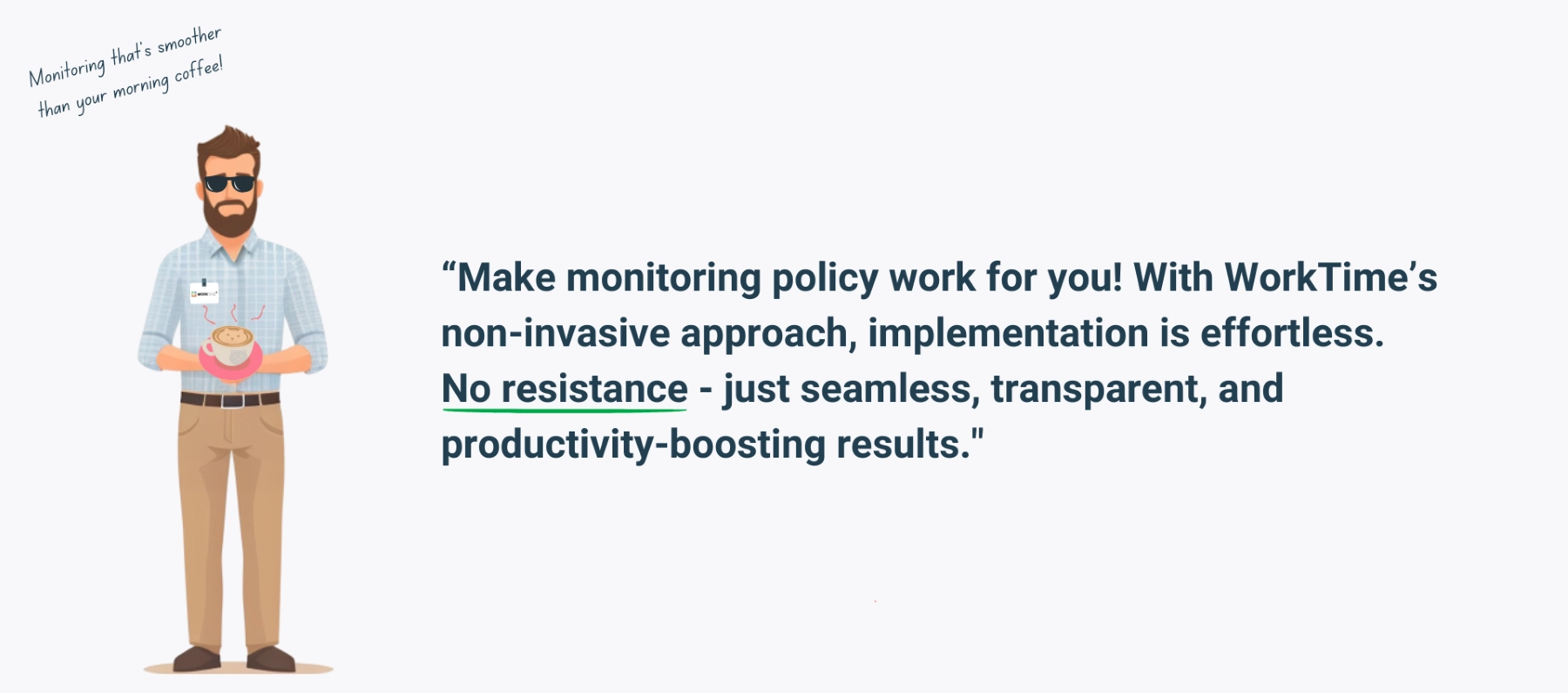
- Stay transparent. Ethical employee monitoring is legal, and it maintains a positive workplace environment.
- Provide a computer monitoring policy in writing. Do not forget to include it in employment contracts, workplace policies, or monitoring handbooks. This approach helps you consider all legal considerations when monitoring staff.
- Obtain employee consent. Signed agreements or email confirmations are crucial to document employee acknowledgment. Check the next chapter for more details.
- Hold a meeting or conduct employee training. Communicate reasons for employee monitoring, explain the policy, and allow employees to ask questions or address privacy concerns.
Employee consent form: mandatory or not?
Monitoring employees in the workplace UK does not always require a consent form. Still, getting employee consent can reduce legal risks. Besides, employee consent is mandatory if you are monitoring employees at work in the financial, healthcare, or legal sectors. The same relates to employees who work on personal devices.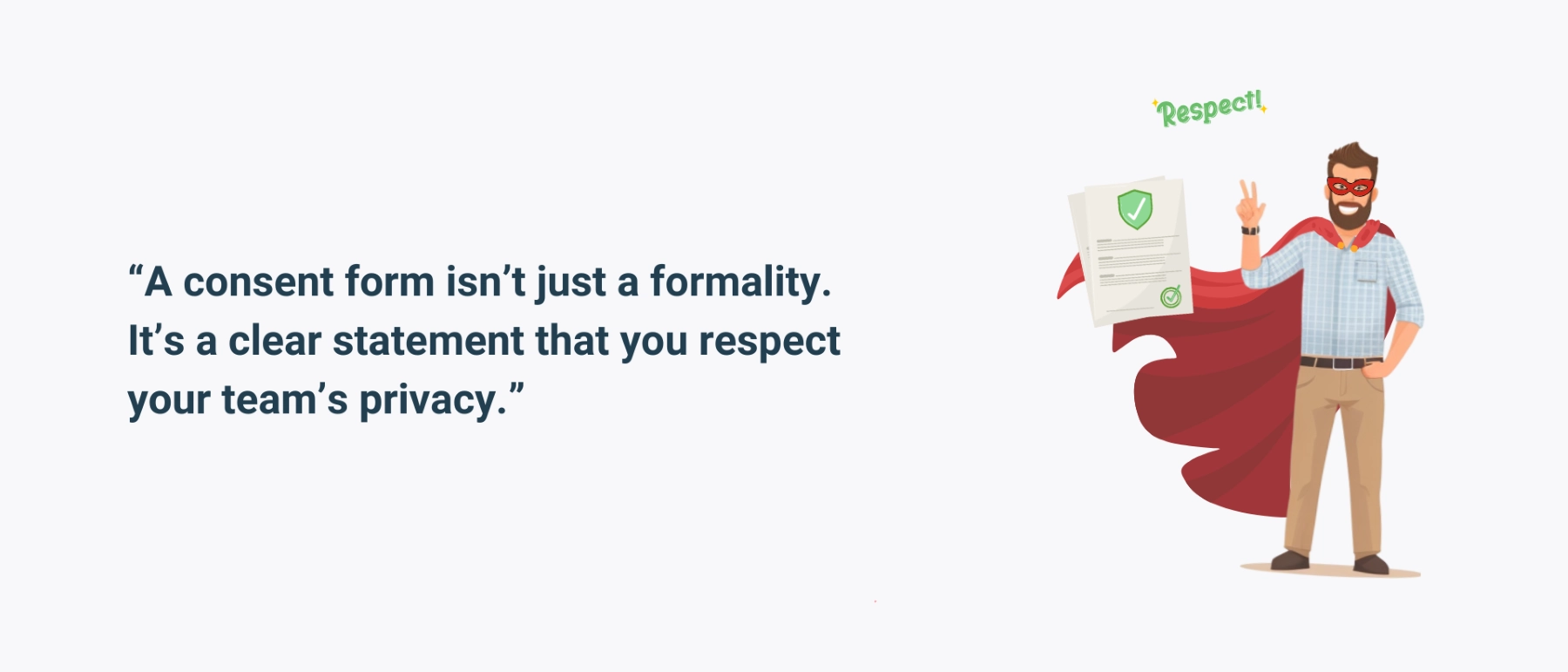
What consent should I use: verbal, written, or electronic?
Written or electronic consent is the best option for employee monitoring under GDPR. It complies with employee privacy rights UK, UK GDPR, and the Data Protection Act 2018. This way, you will have clear documentation proving that employees consented to monitoring practices. Verbal consent is acceptable, but it should be confirmed in writing later.When should you request employee consent?
Several options are possible:- For new employees - during onboarding;
- For existing employees - before implementing/updating a computer monitoring policy;
- When introducing employee monitoring software/new tools for monitoring employees at work.
A key to effective monitoring policy starts with the right approach
Introducing a workplace surveillance policy can be tricky for employers. The common mistakes can range from lack of clear communication to not respecting UK employee privacy rights. These missteps can significantly affect both productivity and morale within a team.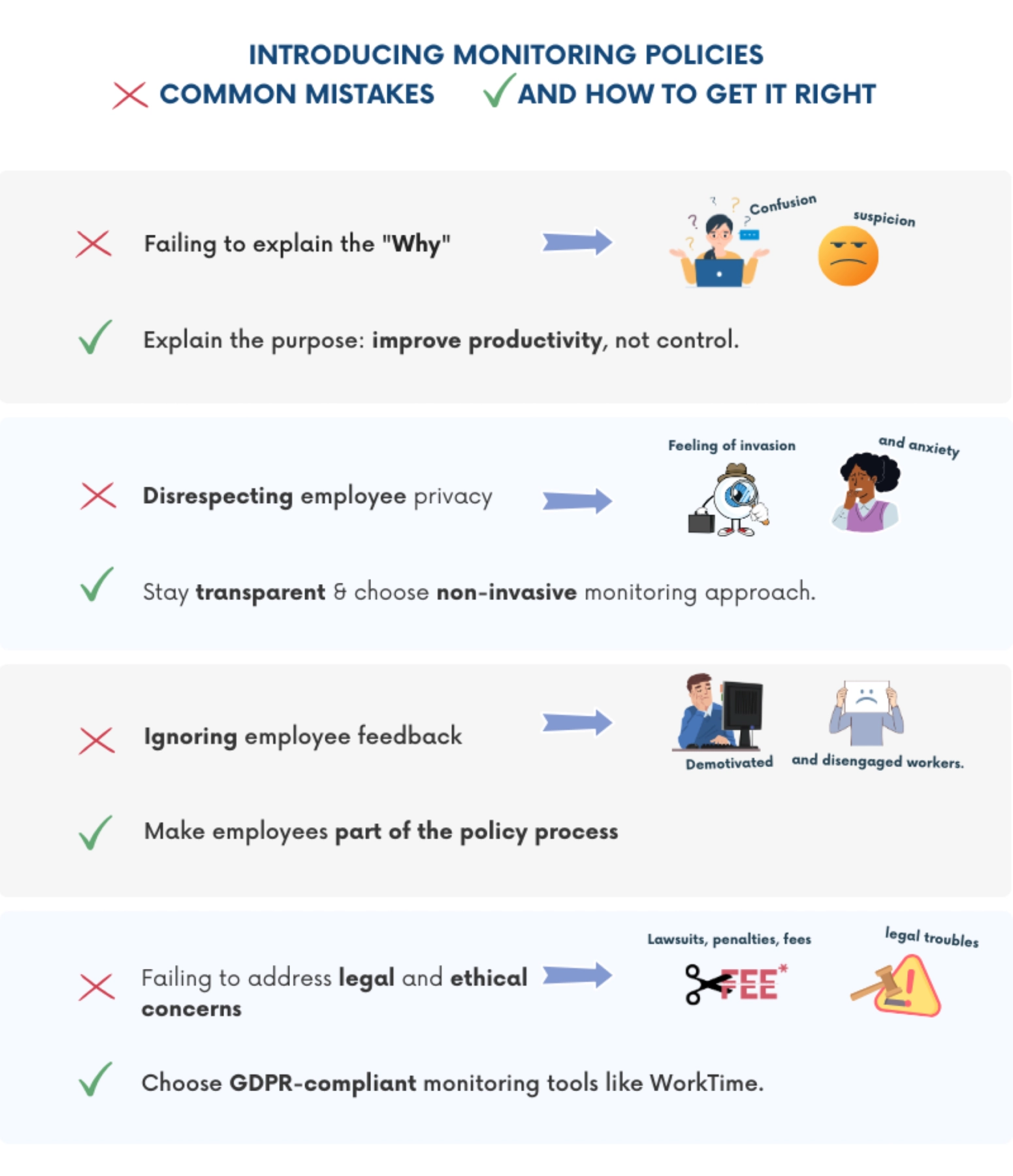
- It aligns with UK laws that apply to monitoring employees. Non-invasive monitoring tools are GDPR compliant.This way, your business remains compliant while protecting employee rights.
- It maintains transparency. Non-invasive tools like WorkTime make it easy to clearly outline what is being monitored and why. This builds trust and helps employees understand the purpose behind the policy.
- It protects privacy. WorkTime focuses only on work-related activities and does not cover any sensitive content. Thanks to our green monitoring system, we analyze only performance metrics without collecting personal data.
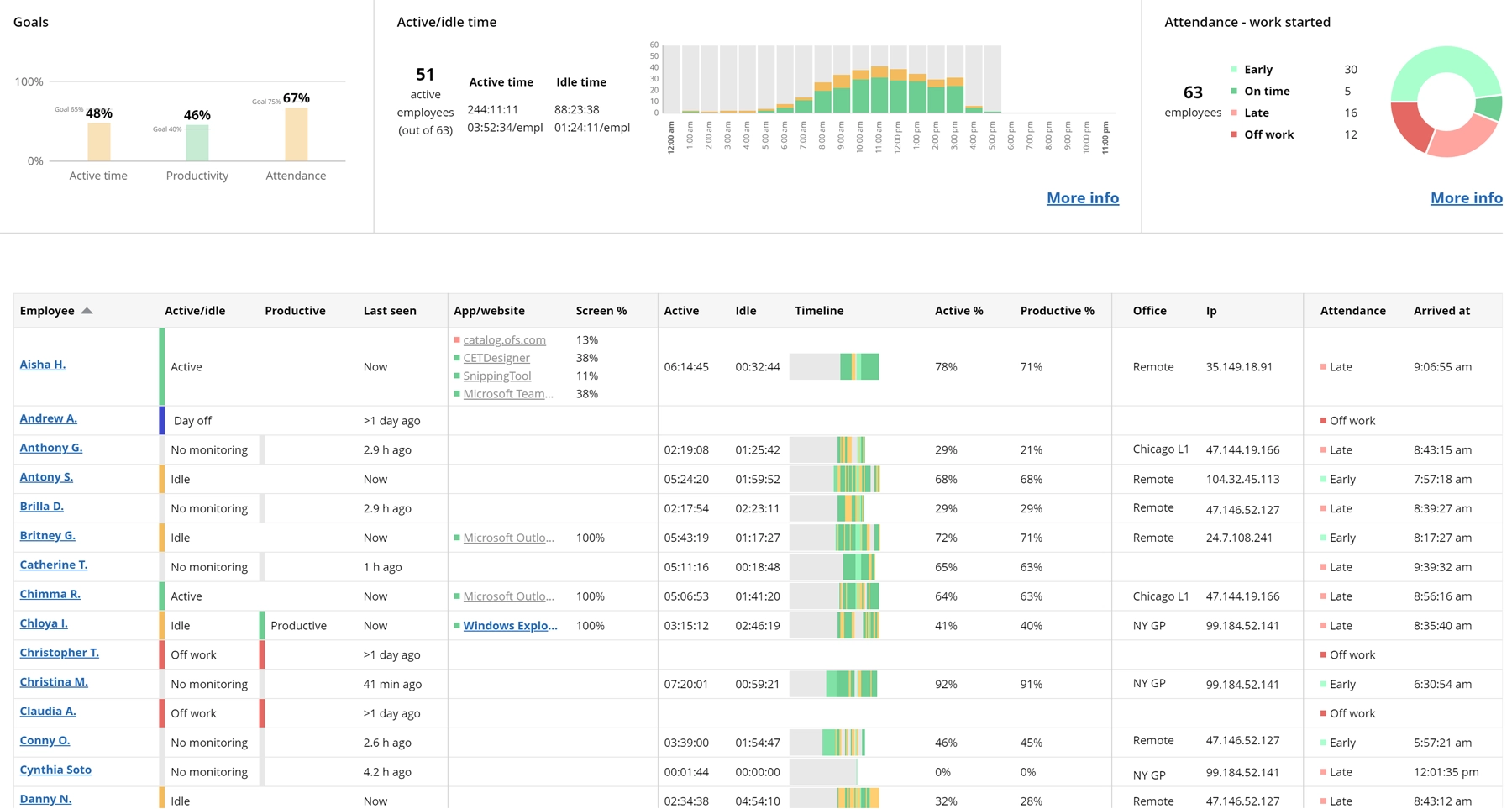

Curious about your company’s real-time performance? This report provides an overview of each employee’s current status, location (in-office or remote), active time timeline, arrival time, the applications and websites in use, and their work goals. No personal content is recorded in this report.
Start free trial6-step guide for UK employers to craft monitoring policy
Here is an employee monitoring policy guide UK with essential steps to consider. Hope our tips on developing a workplace monitoring policy simplify this process for you. Step 1. Consider the legal framework. Ensure compliance with employee monitoring laws UK. Step 2. Define the monitoring purpose. Clearly state the reasons for employee monitoring (e.g., enhancing productivity monitoring or ensuring compliance with industry standards).
FREE employee monitoring policy template UK
We created ready-to-use UK employee monitoring policy templates. Feel free to apply them when crafting your company’s policy. You can easily adapt them to your organization’s goals! Employee monitoring policy sample UK Remote employee monitoring policy example UK6-step guide for UK employers to craft employee consent
Step 1. Define the purpose of monitoring. Clearly communicate why monitoring is necessary. Be specific to maintain trust.